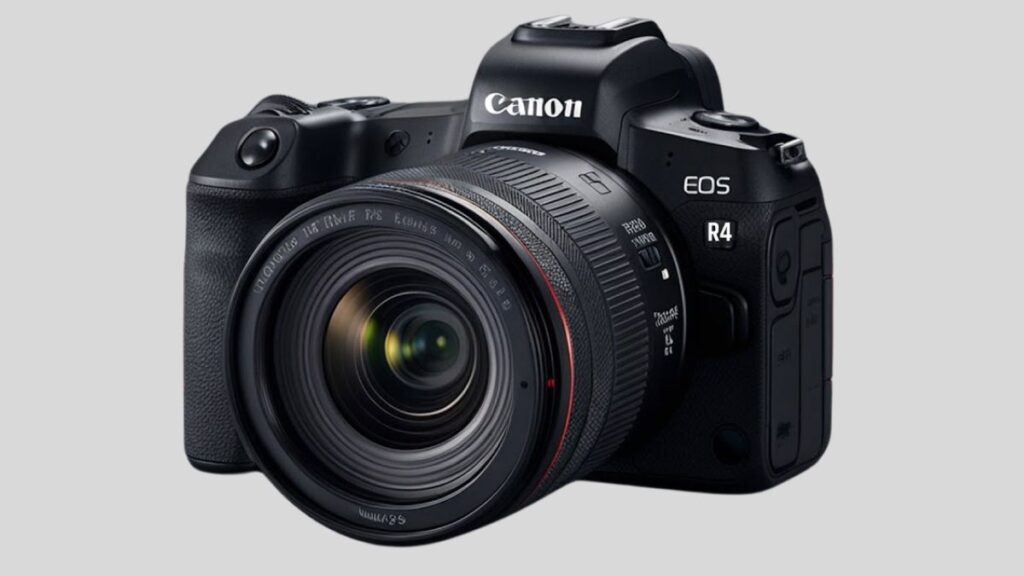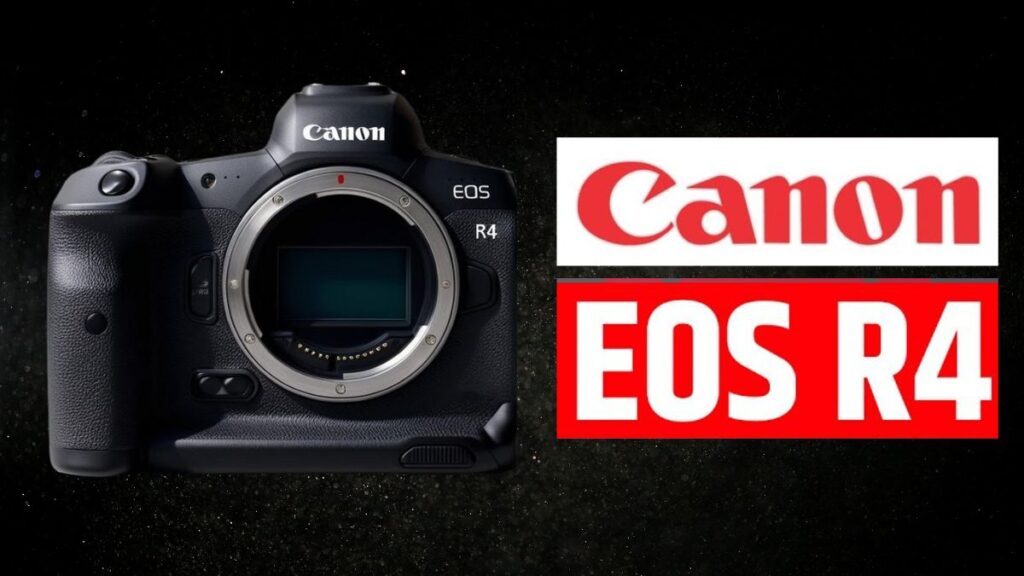The Canon community is buzzing with excitement as rumors continue to build around the possible launch of the EOS R4. With every new release, Canon has managed to raise the bar, and many believe that the EOS R4 could represent the next major step in its mirrorless evolution.
After the strong reception of the EOS R5 and EOS R6, expectations are high that the EOS R4 will strike the ideal balance between image resolution and operational speed. This would make it attractive not just to photographers, but also to serious videographers who want a reliable all-in-one tool. In this article, we will explore the leaks and reports surrounding the EOS R4’s potential features and specifications. We will also compare it with key competitors and its popular predecessor, helping you better understand what Canon might have in store for its next powerhouse camera.
Today’s Best Canon EOS R7 Amazon Deal

Mason knows photography inside and out. With 15 years of hands-on experience, he’s written about cameras, lenses, and gear of all kinds. He even spent five years as a journalist, diving deep into music and writing sharp, engaging stories. Now, Mason shares his photography knowledge, helping readers find the right gear and perfect their skills. He’s also proud of his unbeatable Wordle streak!

Expected Features of the Canon EOS R4
Sensor and Image Quality
Among the most talked-about rumors concerning the Canon EOS R4 is its new sensor. Sources suggest the camera could feature a full-frame sensor boasting a resolution between 50 and 60 megapixels. Some reports even mention a 63-megapixel sensor under development. If these details are accurate, users can expect stunningly sharp images packed with rich detail and an improved dynamic range.
Such a leap in resolution would make the EOS R4 a go-to choice for professionals working in fields like landscape photography, studio portraiture, or high-end commercial shoots, where clarity and color depth are critical. Beyond just more megapixels, Canon is expected to pair the new sensor with an upgraded DIGIC processor. This improved processor would not only manage the massive file sizes better but also enhance overall image quality. Photographers could see better high ISO performance, with cleaner files and finer color transitions even in difficult lighting conditions. All of these improvements combined could make the EOS R4 a major step forward in image excellence.
Autofocus and Performance
Canon’s autofocus systems have consistently impressed photographers, and the EOS R4 is expected to build on that legacy. It is widely rumored that the camera will incorporate Canon’s latest Dual Pixel CMOS AF III system. This would allow for even quicker, more precise autofocus, offering powerful tracking for faces, animals, and moving subjects.
For action shooters, sports photographers, and wildlife enthusiasts, burst shooting speed matters just as much. Early reports suggest that the EOS R4 could deliver continuous shooting rates of up to 20 frames per second. If Canon achieves this, users will be able to capture fast-paced moments with exceptional reliability. Combining top-tier autofocus with high-speed shooting would make the R4 one of the most capable mirrorless cameras on the market for dynamic photography. Overall, the focus performance and speed enhancements expected in the EOS R4 would provide users with a responsive, high-energy shooting experience suited to a wide variety of demanding scenarios.
Video Capabilities
Modern photographers and content creators increasingly look for cameras that can handle both stills and video, and the EOS R4 seems ready to deliver on both fronts. It is strongly rumored that the R4 will support 8K video recording, putting it in line with the most powerful video-capable mirrorless cameras available today.
But it is not just about high resolution. Canon is also expected to include professional-level video features like 10-bit 4:2:2 internal recording, which allows for much richer color data and more flexible editing workflows. Another area of focus could be heat management. While the EOS R5 faced criticism over recording limits due to heat buildup, Canon seems poised to address this concern with better cooling systems in the R4. If successful, this could lead to longer and more reliable video sessions, making the EOS R4 a genuine hybrid powerhouse for creators who demand the best in both stills and motion capture.
Build and Design
Canon cameras are known for their solid build quality, and early rumors suggest the EOS R4 will continue that tradition. The body is expected to be tough, weather-sealed, and capable of performing reliably under harsh conditions such as rain, dust, and extreme temperatures.
Beyond toughness, usability is also getting attention. It is anticipated that the EOS R4 will feature an upgraded touchscreen interface that offers faster navigation and easier setting adjustments. Moreover, the addition of more customizable physical controls could allow users to fine-tune the camera’s operation to match their workflow perfectly. This thoughtful design would make the EOS R4 not only durable but also a joy to use, ensuring that photographers and filmmakers can focus entirely on their creativity without fighting with their gear.
Release Date and Pricing
At this stage, Canon has not formally confirmed the EOS R4, but industry chatter hints that an announcement could happen in late 2025 or early 2026. Given the timing of Canon’s previous releases and the recent surge in registered model numbers, it seems reasonable to expect that the R4 will make its debut within this window.
When it comes to pricing, no exact figures have been provided yet. However, analysts predict that Canon will position the R4 competitively within the professional full-frame mirrorless category. Estimates suggest a starting price near two thousand four hundred ninety-nine United States dollars. This would make the EOS R4 an attractive option for serious photographers and videographers looking for premium performance without paying flagship-level prices. If Canon successfully balances price and features, the R4 could quickly become one of the most sought-after cameras in its class.
Competitor Comparison
Nikon Z8
Nikon’s Z8 has made a strong impact thanks to its forty-five point seven megapixel sensor and ability to record 8K video. The Z8 is designed for hybrid creators who expect top performance in both stills and motion. With a fast and reliable autofocus system, it is a compelling choice for many professionals.
When comparing the EOS R4 to the Nikon Z8, both cameras seem well matched in terms of core capabilities. However, Canon’s advantage may lie in its Dual Pixel autofocus technology, which has long been praised for its smoothness and accuracy, particularly during video recording. Moreover, Canon’s intuitive menu design and handling could make the R4 a more user-friendly option for photographers who value quick access to controls during critical shoots.
Sony A7R V
The Sony A7R V is known for pushing the boundaries of resolution with its sixty-one megapixel sensor. Its autofocus system is also cutting-edge, offering fast and precise tracking across a range of subjects. For photographers who prioritize maximum detail, the A7R V is a strong contender.
In comparison, the Canon EOS R4 may offer slightly lower resolution but aims to deliver a better-rounded feature set. While Sony focuses heavily on high-resolution stills, Canon seems to be balancing high-quality photos with professional-grade video capabilities. If the R4 includes better heat management and enhanced video recording options as expected, it could offer greater flexibility for hybrid shooters who need excellence across both mediums.
Canon EOS R5
The EOS R5 has already proven itself as a versatile workhorse, with its forty-five megapixel sensor and strong 8K video performance. It successfully introduced features like high-speed autofocus and reliable in-body stabilization.
The EOS R4 is expected to build on these strengths, offering refinements across the board. Improvements in sensor technology, faster processing, a redesigned user interface, and better thermal performance could give the R4 enough appeal to make it a logical upgrade for current R5 owners looking for even greater performance.
Final Thoughts and Recommendations
The Canon EOS R4 is shaping up to be one of the most exciting camera launches in recent memory. With expected improvements in resolution, processing power, autofocus technology, and video recording capabilities, it has the potential to appeal to a wide range of professional users.
It doesn’t matter if you are focused on shooting high-end stills or shooting cinematic videos, the R4 could be an excellent choice. It appears designed for photographers and videographers who demand versatility without compromise.
For those interested in adding a new camera to their kit, it would be wise to stay tuned for official announcements. Based on what we know so far, the Canon EOS R4 looks poised to deliver outstanding value and performance in the competitive full-frame mirrorless market.
If you are excited about what the Canon EOS R4 might bring, stay tuned for more updates by following our blog. We would also love to hear your thoughts. Share your expectations and opinions about the EOS R4 in the comments below!


